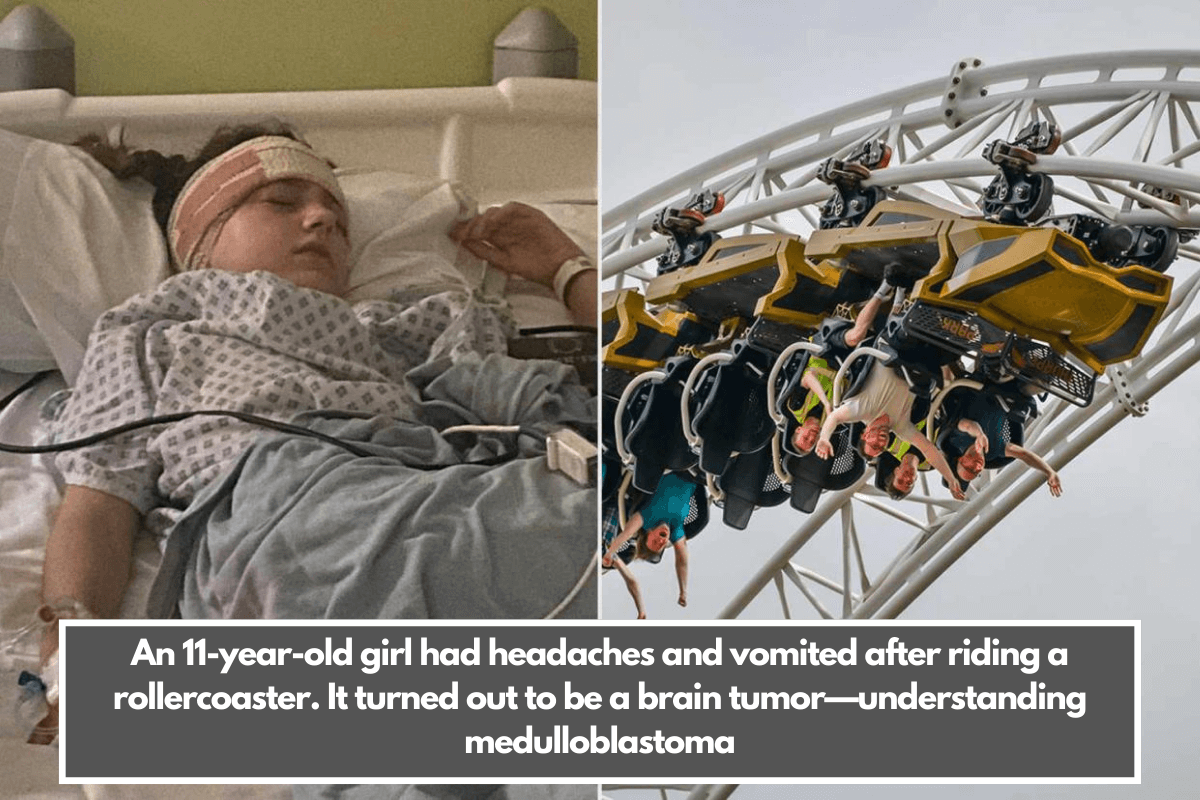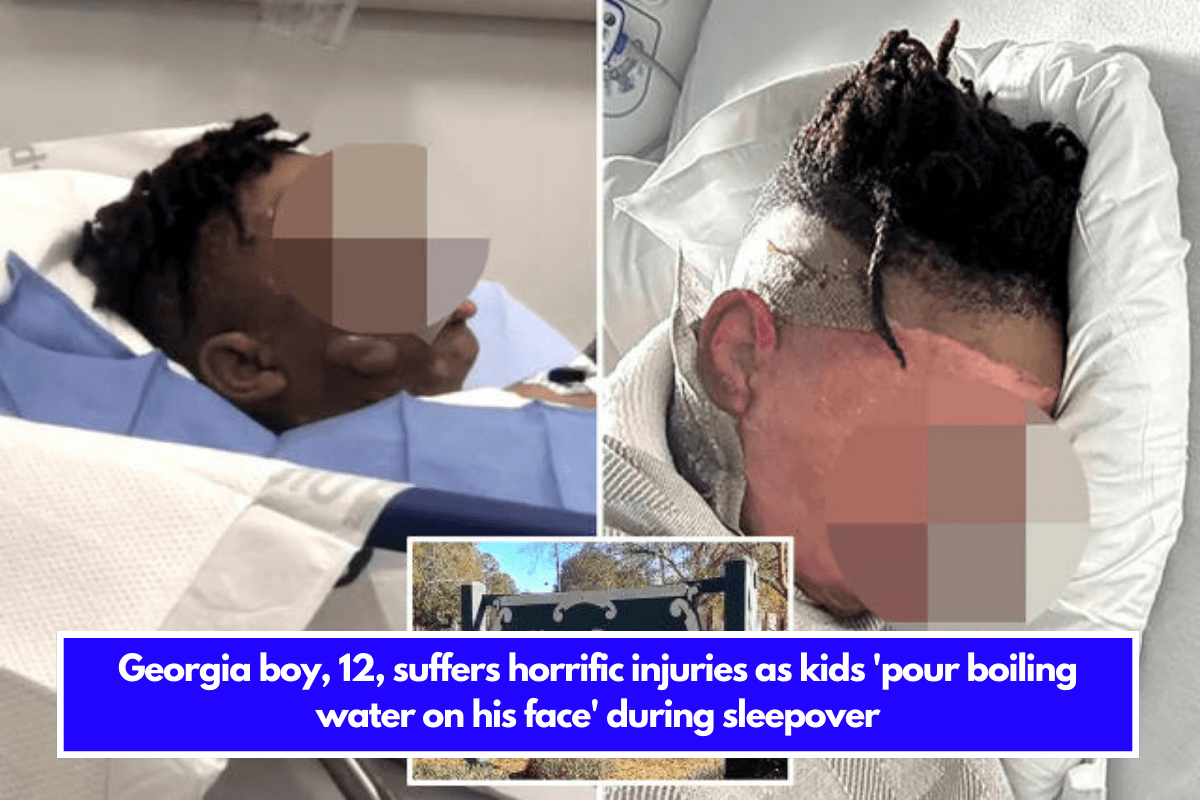Understanding Brain Tumor
- Connie Campbell was 11 years old when she discovered she had a type of brain tumor called medulloblastoma [a rare primary central nervous system tumor] just days after going on rollercoaster prompted her to experience headaches and vomiting.
- She was ultimately diagnosed with a brain tumor. Campbell, now 13, underwent brain surgery just months after her diagnosis, as well as radiotherapy and chemotherapy treatments. Her mom hopes to raise awareness and money for research for U.K.-based charity Brain Tumor Research.
- The type of brain tumor she battled is a medulloblastoma, which is a rare primary central nervous system tumor, the National Cancer Institute explains. This type of brain tumor is cancerous and grows quickly, making it more likely to spread to other parts of the body. Luckily, Campbell’s cancer was found before it spread to her spine.
- Brain tumors account for 85-90% of all primary central nervous system (CNS) tumors, according to the American Society of Clinical Oncology (ASCO).
- When it comes to brain tumors, as new treatment approaches are continually being explored through clinical trials, the standard of care for glioblastoma has remained largely consistent since 2005. It combines maximal safe surgical resection (surgery to remove as much of the cancer as possible) followed by chemotherapy and radiation.
Connie Campbell discovered she had a type of brain tumor called medulloblastoma [a rare primary central nervous system tumor] at the age of 11, after experiencing a headache and vomiting just two days after riding rollercoasters with her family.
Campbell, now 13, underwent brain surgery, radiotherapy, and chemotherapy just months after being diagnosed. Her mother, Tina Smith, 54, has since become determined to raise awareness and funds for Brain Tumor Research, a charity based in the United Kingdom.
Tina told SWNS in a recent interview, as reported by The Mirror, that she is grateful for the shocking incident because it led doctors to discover a grade 4 tumor. Smith plans to run a charity marathon in the hopes of raising awareness of symptoms and encouraging others to seek medical attention sooner rather than later.
He told SWNS, “There’s a difference between getting thrown around a bit for fun and having your head ricochet so hard you don’t feel right after.”Connie and I did not go on the rides again, but her father and brother did.
She became ill two days later, which seems far too coincidental for the two events to be unrelated.” She went on: “I suspect the rides dislodged her tumor and, if that’s the case, I’m glad because I was told we found it at a good time before it spread to her spine.”
Helping Patients Better Understand Brain Cancer
- Diagnosing Gliomas — Resections and the Grading System
- Molecular Testing for IDH Inhibitors in Glioma Patients
- New FDA Approved Vorasidenib for IDH Mutant Gliomas
- Radiation Therapy in the Treatment of Glioma: A Comprehensive Overview
- The Role of Surgery in Treating Gliomas — It’s Complicated
- Understanding Glioma: Challenges of Radiation Therapy vs. Surgery
- Why Some Gliomas Return After Surgery or Radiation Therapy
- Remembering Senator Ted Kennedy, Who Loved Summer And The Sea — The Brain Cancer That Took His Life Now Has New Treatment Options
Campbell, who is from South Woodford in East London and had to miss a year of school for treatment, was diagnosed with grade 4 medulloblastoma in September 2022. She had surgery, followed by a phase 3 clinical trial for high-risk medulloblastoma patients.
According to Brain Tumor Research, she also underwent induction chemotherapy, 30 radiotherapy sessions, and a six-month maintenance chemo regimen. Her follow-up scans were clear as of December 2022, but she remains concerned that the tumor will recur. She battled a medulloblastoma, a rare primary central nervous system tumor, according to the National Cancer Institute.
This type of brain tumor is cancerous and grows rapidly, increasing the likelihood of spreading to other parts of the body. Common symptoms for this type of tumor can include:
- Difficulty walking or balancing
- Headaches
- Nausea
- Vomiting
- Difficulty with vision
- Seizures
When Campbell’s symptoms first appeared, her mother told Brain Tumor Research, “She was just starting secondary school, so she made every effort to attend, but she’d get up in the mornings, throw up, and complain that her head hurt.” She explained further, “By the afternoon, she’d feel fine.
I took her to the doctor, and it was suggested that she had migraines. We were told to return if her symptoms persisted, but I have migraines, so I didn’t think that was what she had. A few days later, Connie experienced another bad turn. I wanted to take her to A&E [hospital], but I was concerned that if her symptoms resolved, as they usually do, they would also send me away.
Instead, I called the NHS 111 helpline. They requested permission to speak with our GP, who called us in to check Connie out and then referred us to the paediatric department at Whipps Cross University Hospital in East London.
The referral did not come through right away, so I called to follow up, which resulted in her being booked in the following day.” When they arrived at the hospital, Campbell had a CT scan, which revealed she had a tumour. Her story is a perfect reminder of the importance of seeking answers about your health.
Understanding Brain Tumors & Treatment Options For Brain Cancer
Brain tumors can have an impact on a person’s brain function and overall health, but the extent depends on their size, type, and location within the brain. Tumors that grow large enough to disrupt normal central nervous system function may press on nearby nerves, blood vessels, or other tissues.
The disrupted central nervous system can manifest in a variety of ways, making walking and maintaining balance difficult. Brain tumors can be benign (non-cancerous) or malignant (cancerous). There are several types of brain tumors, with gliomas being the most common cancerous form of aggressive primary brain tumors.
What is a glioma: Understanding Types and Standards of Care Treatment options for brain cancer are determined by a number of factors, including the tumor’s size, type, and grade. RELATED: Understanding the treatment path for glioma patients. Doctors can treat brain tumors with surgery, radiation, or chemotherapy.
Cancer warriors are encouraged to consult with their doctor about their situation and the best treatment options. The prognosis for brain cancer, or the likelihood of cure, depends on a few factors:
- The type of brain tumor
- How fast the brain tumor is growing
- The tumor’s location
- If there are DNA changes in the cells of the brain tumor
- If the entire tumor can be removed with surgery
- A patient’s overall health
The Grading System of Gliomas
Gliomas, a common type of brain tumor, are graded from I to IV, with higher grades indicating a more aggressive tumor. This grading is determined by a number of factors, including the type of glioma, the cancer’s genetics, and the appearance of the tumor cells under the microscope. The more abnormal the cells appear, the higher the grade, and the faster the tumor will grow and spread. Here is a brief overview:
- Grade I-II gliomas – These are considered low-grade and tend to grow slowly. “The grade one is a very indolent, benign tumor that basically can be cured with surgery alone,” Dr. Henry Friedman , Deputy Director of the Preston Robert Tisch Brain Tumor Center at Duke, told SurvivorNet.
- Grade III gliomas – These are considered high-grade and tend to grow more rapidly. Grade III gliomas are typically classified as malignant and typically require more aggressive treatment which can include surgery, radiation, and chemotherapy.
- Grade IV gliomas – These are the most aggressive gliomas which are locally aggressive and require treatment intensification. Glioblastomas are the most common grade IV glioma, “which is by far the most well known and most feared tumor in the lay population and quite frankly, the medical population as well,” Dr. Friedman shared.
Although Grade IV gliomas are the most aggressive gliomas and may necessitate a variety of treatments such as surgery, radiation, and chemotherapy, treating low grade gliomas can also be challenging.
When deciding on treatment, several factors are considered, including the tumor’s location, ease of surgery and resection, neurologic deficits, patient age, tumor size, and overall health. Why Do Some Gliomas Return Following Surgery or Radiation Therapy?
Types of Cancerous and Non-Cancerous Brain Tumors
A brain tumor can have different effects on you depending on where it is located and whether it is cancerous. Some brain tumors are not cancerous (also known as benign). According to the National Cancer Institute, some examples of these types of brain tumors are:
- Chordomas are primarily benign and slow-growing and are often found near the tailbone or where the spine meets the skull.
- Craniopharyngiomas are rare, slow-growing tumors that don’t spread to other parts of the brain or body. They form near the pituitary gland near the base of the brain.
- Gangliocytomas are rare tumors of the central nervous system that tend to form on the temporal lobe (the left or right side of the brain).
- Glomus jugulare are rare and slow-growing tumors.
- Meningiomas are rare brain tumors that usually form on the outer layer of tissue that covers the brain (dura mater).
- Pineocytomas are rare and slow-growing tumors located in the pineal gland near the middle of the brain.
- Pituitary adenomas are slow-growing brain tumors of the anterior pituitary located in the lower part of the brain.
- Schwannomas are rare tumors that grow on the cells that protect nerve cells. They are called Schwann cells.
- Acoustic neuromas (vestibular schwannoma) are slow-growing tumors that develop from the nerves that help balance and hearing.
Other brain tumours are malignant or cancerous. These types of tumors include:
- Gliomas are the most common form of cancerous and aggressive primary brain tumors.
- Astrocytoma (glioma) forms in astrocytes (star-shaped cells). Depending on how aggressive or fast they grow and impact brain tissue, these tumors are classified into four grades.
- Ependymomas are tumors classified into three grades depending on how aggressive or fast they grow.
- Oligodendroglioma tumors are classified into grades depending on their growth speed. Grade 2 oligodendroglioma tumors are slow-growing and can invade nearby tissue, but they may not present symptoms for many years before detection. Meanwhile, grade 3 oligodendroglioma tumors proliferate.
- Medulloblastoma tumors are classified into four different grades depending on their aggressive nature or how quickly they grow.
- Glioblastoma, which is considered a central nervous system (CNS) tumor, is the most common and aggressive brain tumor in adults.
Stepping Up as a Caregiver & Learning How to Ask for Help
A caregiver may be a partner, parent, child, friend, or neighbor. However, it should be someone who is willing to devote the necessary time and effort to understanding the diagnosis and following the medical team’s recommendations. “I encourage caregivers to come in to visits with my patients, because in that way, the caregiver is also listening to the recommendations — what should be done in between these visits, any changes in treatment plans, any toxicities [side effects] that we need to look out for, changes in dietary habits, exercise, etc.,” Jayanthi Lea, MD, told SurvivorNet.
“The work is extremely hard.” How to be a better caregiver for your loved ones Caregivers should be willing to share what they’ve learned while caring for their loved ones on a daily basis, as well as notify the doctor of any side effects or other issues that arise.
They must also be willing to step back from time to time. “Step back a little and let the patient speak for themselves. “Let them express their emotions,” said Dr. Lea. “That is so important for the patient’s overall quality of life and well-being.” The first thing to understand about being a caregiver is that there is no shame in asking for help.
This can be a stressful time for both patients and their caregivers. ‘A Sacred and Blessed Calling’: Managing Life As A Caregiver Through interviews with expert advisors, social workers, patient advocates, and more, we’ve created a checklist of helpful steps caregivers can take throughout the journey. Here is a list of responsibilities that caregivers help take on:
- Attend doctor visits with the patient
- Help the patient take notes/ask questions
- Provide transportation to and from treatment
- Accompany the patient during treatment
- Help keep track of side effects
- Link up with a social worker/patient navigator
- Help with day-to-day activities
- Provide emotional support
Social Workers/Patient Navigators Can Help
Social workers or patient advocates can be extremely helpful to caregivers. As a caregiver, you may want to seek the assistance of one of these employees, who frequently work for medical facilities, for advice on treatment options, financial assistance, where to find mental health resources, and much more.
Patrick Dempsey’s Critical Advice to Caregivers: ‘Take Care of Yourself’ “Patient navigators can function differently at different hospitals,” explained Dr. Kathie-Ann Joseph, a surgical oncologist at NYU Langone Health’s Perlmutter Cancer Center, to SurvivorNet.
“We have a really wonderful program at [NYU] where we used lay navigators meaning they’re not nurses, although you can use nurses or social workers that pretty much help newly diagnosed cancer patients through the continuum of care.” Contributing: SurvivorNet Staff.





















